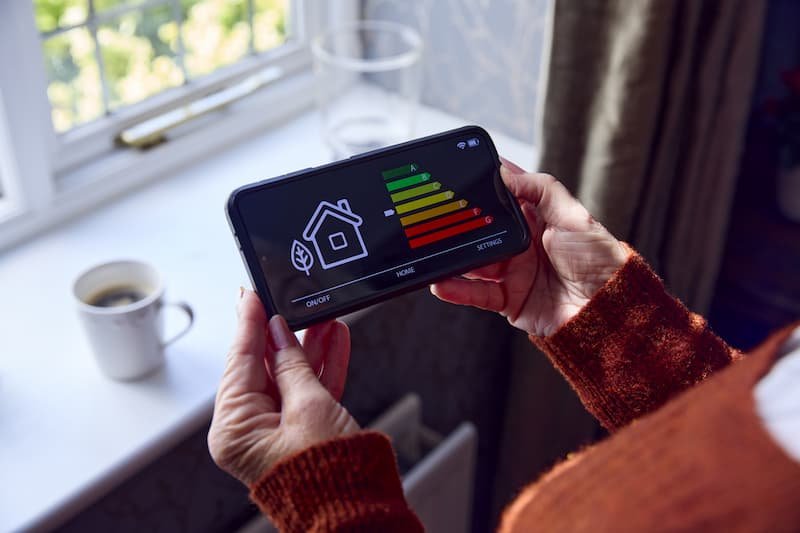Winter is an expensive time for families with the holidays, Christmas, and increased heating bills. Improving your home's energy efficiency is costly, especially with the cost-of-living increases. Fortunately, there is a better way.
Would it surprise you that a thermal imaging camera could help reduce your energy bills? With these practical tools, you can isolate the worst energy flaws within your home and get the most for your money from your improvements.
Improving Your EPC
Every homeowner wants ways to streamline their expenses. Improving your EPC (energy performance certificate) has many financial benefits. For example, improved EPCs let homeowners sell their homes for increased prices as they are more energy efficient.
Families happy in their homes can also benefit from an improved EPC rating. The critical aspect of these ratings is their improved energy efficiency. The plumbing, electricity and heating are all valuable resources during winter that cost homeowners money. These resources (particularly heating) can be used wastefully in homes that are not energy efficient, with a significant portion lost through the walls and roof.
Roughly 25% of the heat a boiler produces will be lost through the roof; an additional 35% will bleed through walls, doors, and windows and a final 10% through the floor. This is known as a thermal envelope of your property.
How Do Thermal Cameras Help?
Thermal imaging cameras are unique because they can read infrared waves we cannot see. Our range of cameras will be able to read the temperature of your building's thermal envelope and present the results in a colourised thermal palette image.
The thermal cameras convert the infrared information into an image that shows the surface temperature of the object being measured. Each of these temperatures is assigned a different colour, so you can efficiently see where they are in real-time. Widespread use for these cameras is to assess the temperatures of machinery, electrics, insulation and plumbing without interference or physical contact and reveal their condition.
These thermographic building surveys are either active or passive. Active surveys are rarely conducted on buildings, but passive surveys will reveal a lot about a building's status. Passive thermographic surveys focus on the persistent natural temperatures and will show what the long-term results would be after the scan.
Problems Thermal Cameras Can Find
There are many issues that a thermal camera can reveal about your building, but during winter, a few will lead to a significant increase in energy bills. For example, the adverse effects of ineffective insulation. Your home's heating may be fighting against hidden air leaks or thermal bridges, or the heating might have a fault.
Using a thermal imaging camera to explore these possibilities is a cost-effective solution compared to lifting floorboards or wall panels to inspect areas by hand. This way, you can pinpoint any faults in your home and fix them for long-term savings on your heating.
Keep the Heat Under Your Roof
Manually checking your loft insulation will be a long, drawn-out, inefficient process; taking a blanket approach to improve it all will be costly.
When doing a thermographic survey, a thermal imaging camera will be able to show you how effective the specific areas of roof insulation are at keeping your valuable heat inside. Any areas of your loft insulation that is lacking will be revealed through the changed to the thermal image. These specific areas can be repaired and improved for a reduced cost.
Keep the Warmth Behind Your Walls
Like a thermographic assessment of your roof, you can use a thermal imaging camera to view how much heat is escaping your walls. There are many ways this can happen; for example, windows and doors are weak spots that can help heat escape and cause drafts internally. Additionally, a home with a cavity wall may have a problem with its internal insulation, which needs repairing.
When's the Best Time for a Thermal Survey?
October to March is an excellent time to conduct a thermal imaging survey, as the results will be the most accurate.
The warm summer can affect the results by creating additional external warmth. The heat from the sun will be present in the stonework of your home for some time after sunset and present itself as increased heat on a thermal image. This effect on the survey will make specifying the areas of poor insulation difficult.
When viewed externally, the thermal image will help to reveal the areas where your insulation is insufficient, as the internal heat is being allowed to bleed freely through your walls. To compensate for this failing insulation, you'll have to increase your heating and expenses at a time of year when every penny counts.
Thermascan supplies the most comprehensive price range of thermal imaging cameras in the UK for hire or sale. We have a camera to suit everyone's needs, such as the professional-grade FLIR T1020. Alternatively, you can make it easier by letting one of our experts do a detailed survey for you.





